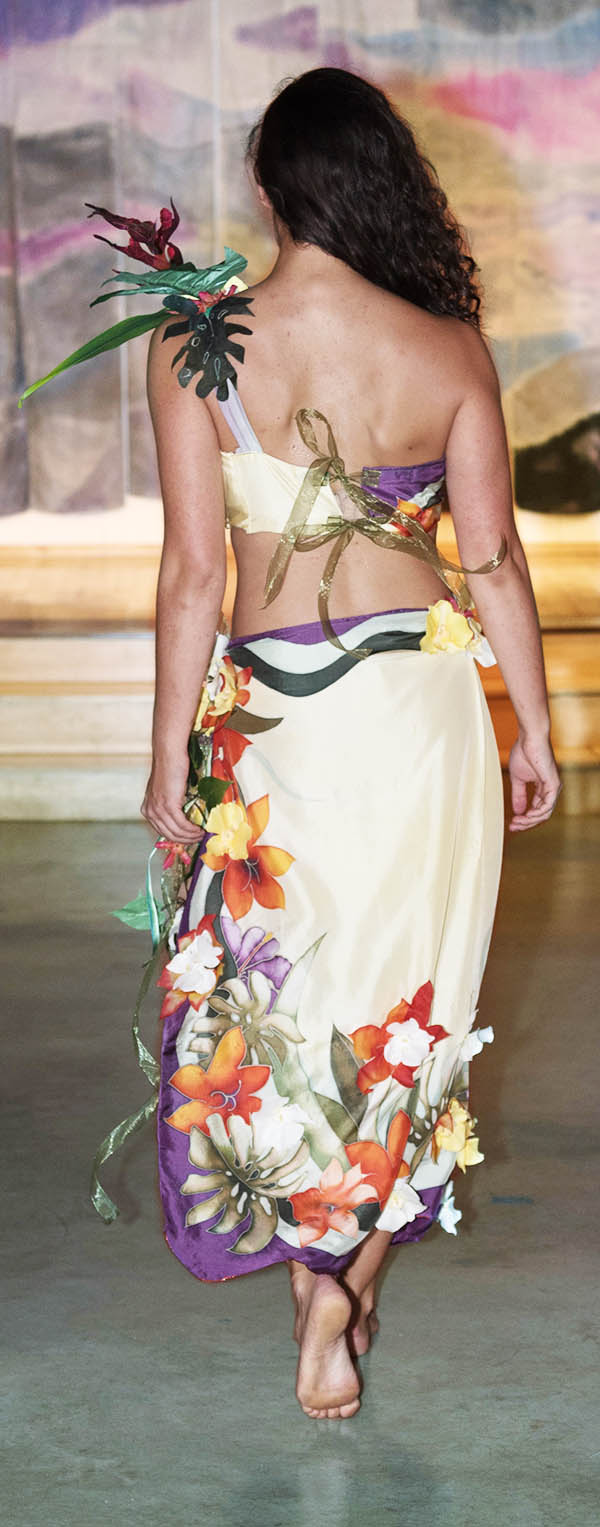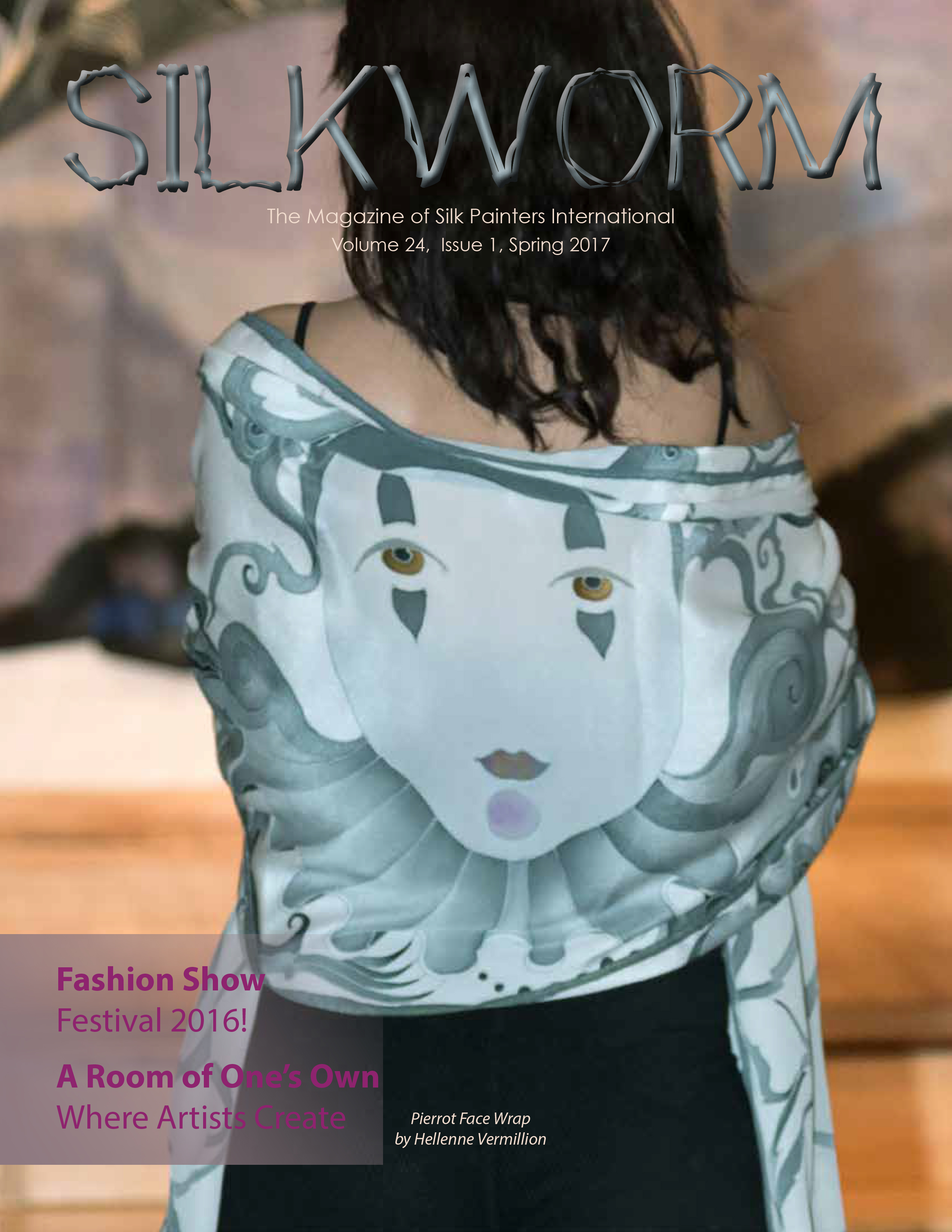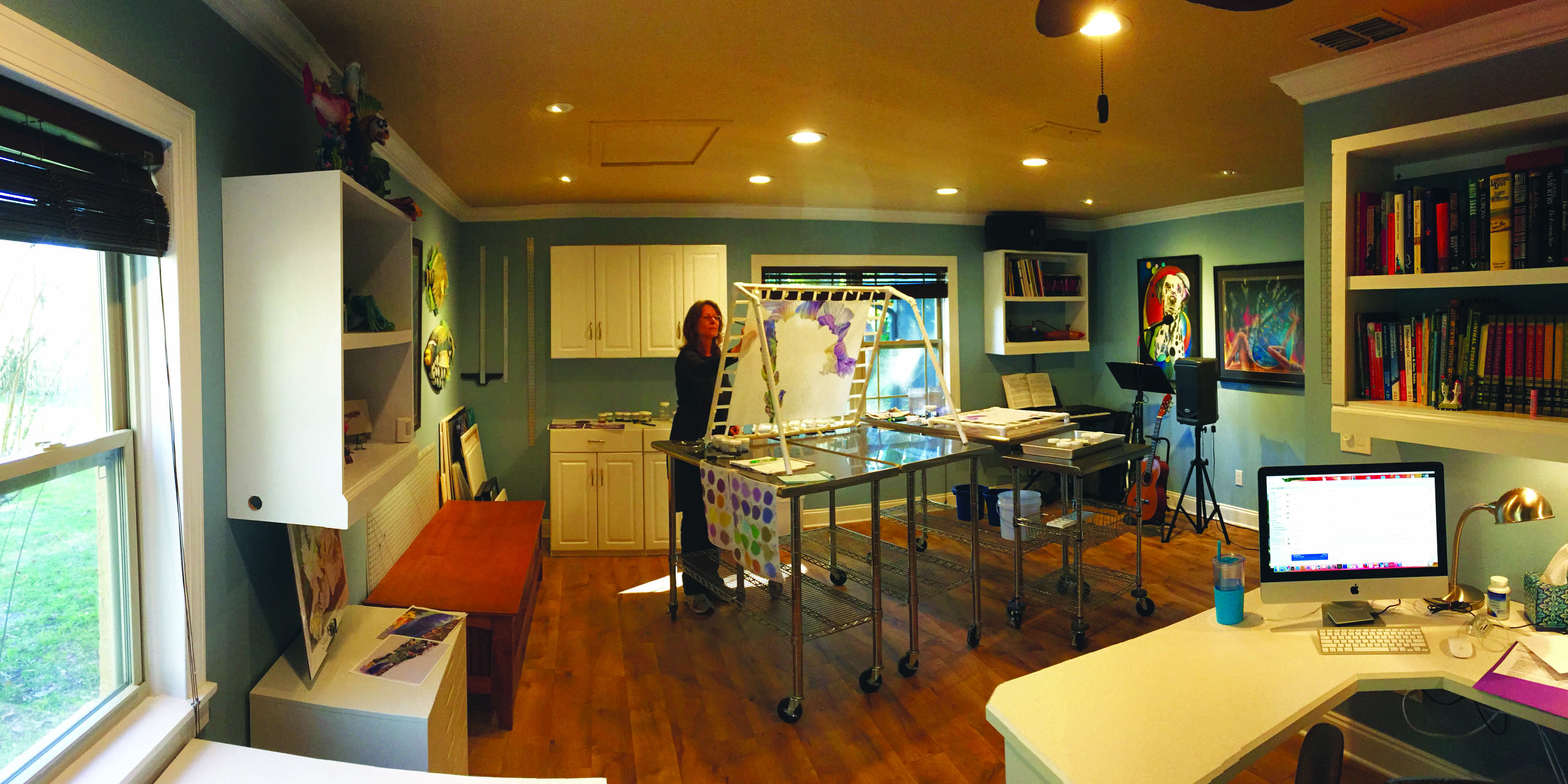|

Brazilian Desire, Sherrill Schoening
|
SPIN FASHION SHOW - FESTIVAL 2016
A Serendipitous Cascade of Colors, Textures And Designs
by Denise Stewart-Sanabria
The audience attending the 2016 SPIN Fashion Show at the Arrowmont School of Arts and Crafts in Gatlinburg, TN created a sartorial triumph by themselves. Attendees wore all kinds of silk scarves and tunics that very well may have come from the hands of some of the twenty-six silk painters whose garments were paraded through Arrowmont’s large auditorium.
The chairs that usually fall back in rows from the stage had been arranged in classic sideways parallel lines to create a runway for the models, who breezed elegantly through, though at times at a slightly delayed procession. The delays were the perfect opportunity for ad-libs from the moderator, Audrey Durnam. At one point we learned from her where the chic pounding background music came from. “I assigned my son the problem of finding runway music,” she said, “and he found that the music that Victoria’s Secret uses for their shows wasn’t copyrighted!”
Scheduled in the middle of the week during the SPIN conference’s silk painting workshops, at least one of the garments on the runway had just been completed while others were so complex that they had taken months of experimentation to complete.
First on the runway were three pieces by Margaret Agner (p. 10). She worked with the most diverse materials in the show, ranging from a heavy raw micro-plaid silk in Ombre Shadow Jacket. She continued her use of more challenging materials in Night Creatures, a flowing top with a detachable scarf. The bottom of the top had a band of pre-elasticized bubble silk attached, to make it form fitting over the hips. The elastic was partly the thread itself, making different dye absorption into larger areas of man-made material less of a worry, so that it blended perfectly with the chiffon used in the rest of the garment. Agner is known for her butterflies, and Wrapped in Wings was a stellar example. She uses curved seams over and over in her work, and she discusses her secret in making them appear as selvedge edges in one of the artist interviews later in this article.
(To read more, go to Vol. 24, Issue No. 1.)
|


